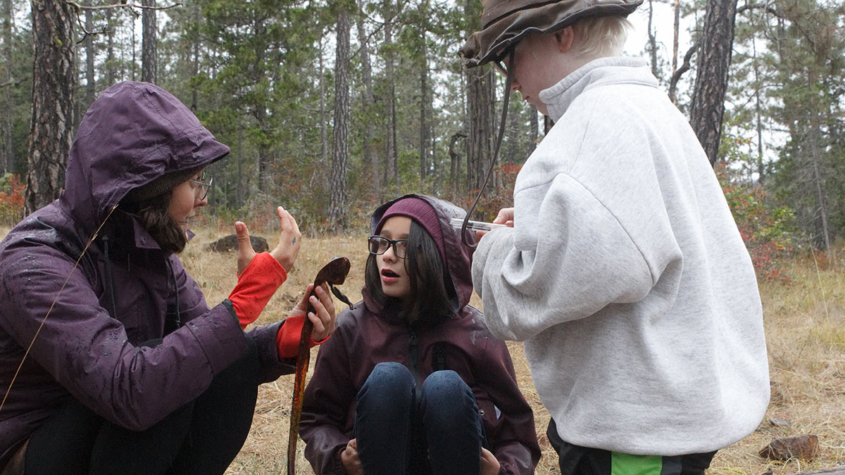Master’s of environmental education at SOU: 50 years in
(Ashland, Ore.) — “Eventful” pretty well sums up the 1968-69 academic year: The decision was made at Yale University to admit female students. USC running back O.J. Simpson won the Heisman trophy. A music festival called Woodstock would be held during the summer. And Southern Oregon University launched its Master of Science in Environmental Education program – an ahead-of-its-time curriculum that would adapt, evolve and prepare hundreds for outdoors- and sustainability-related careers over the next 50 years.
“The program is committed to creating environmental leaders, and focused on staying modest in size to be able to present the highest quality,” said SOU professor Stewart Janes, one of the program’s current coordinators. “Our goal is to become more well-known, in an effort to be the go-to for environmental education in Oregon.”
SOU’s program has been unique in the state since its beginning – designed during the 1960s by biology professor Irene Hollenbeck to prepare elementary teachers to operate outdoor schools. Hollenbeck was an outdoor school pioneer, establishing the state’s first in 1957, and her curriculum at SOU (at the time, Southern Oregon College) was initially called the Master of Science in Outdoor Education program.
A lack of funding and support for outdoor schools in the 1980s put the program at a crossroads: it could either dissolve or be redesigned. Its then-directors, biology professors Ron Lamb and Don Mitchell, broadened it to serve additional purposes as the Master of Science in Environmental Education program beginning in 1990.
The program has produced about 300 degrees, and spawned careers with agencies including the U.S. Geological Survey, the Houston Zoo, the nonprofit Wimberley Valley Watershed Association in Texas and the Florida Fish and Wildlife Commission.
One notable member of the program’s 1985 cohort is Linda Hilligoss, who went on to create a nonprofit organization, teach elementary and middle school, and serve as the education coordinator at Crater Lake National Park’s Science and Learning Center. She returned to SOU as science education coordinator, and has served for the past 12 years as co-coordinator of the master’s in environmental education program with Janes.
“The accomplishments of all of our graduates are exemplified in the varied leadership roles they step into across the country,” said Janes, an environmental education professor.
The program focused in part on natural history and education as it transitioned during the early 1990s from its outdoor school roots toward its current emphasis on environmental education. A partnership between environmental education – at the time, part of the Biology Department – and the SOU School of Education had developed by the mid-2000s, enabling students in the department to take education courses. SOU also partnered with the nonprofit Siskiyou Field Institute to operate the Deer Creek Center – a field station near Selma with yurts and meeting facilities.
The partnership with SFI allowed SOU’s environmental education master’s students to present eight weeks of educational programs at the field station each fall. That served as underpinnings for the Fall in the Field capstone project, which remains a central element of the master’s degree program.
Fall in the Field has benefited from collaborations with the federal Bureau of Land Management, the Friends of the Cascade-Siskiyou National Monument, the Ashland Food Co-op and the Rogue Valley Audubon Society. SOU’s environmental education master’s students are now in their eighth year of an arrangement with the BLM to provide educational programing at the national monument.
Students in the 1 ½-year master’s degree program learn to create, market, manage and assess the effectiveness of their educational offerings. Their tasks range from curriculum development to arranging for on-location porta-potties.
The master’s program includes various other ongoing projects, including the offer of “Natural Science Kits” for loan to K-12 educators in Jackson, Josephine and Klamath counties. The kits have been available for more than 25 years, to provide teachers a no-cost opportunity bring the ecology of the Klamath-Siskiyou bioregion into local classrooms with curriculum developed by SOU’s environmental education students.
The SOU master’s program is the first in the Western U.S. and sixth overall to be accredited by the North American Association of Environmental Education. Representatives of the SOU program now serve in leadership roles to help other universities achieve accreditation and align with NAAEE standards.
The program is as vital and popular as ever as it passes its 50th anniversary, helping students address issues – both locally and globally – such as climate change and loss of biodiversity.
“Humans are the stewards of our planet, and as environmental educators it is our duty to increase awareness for the need for mindful stewardship while encouraging action,” said Crystal Nichols, a graduate assistant in the program.
-SOU-

